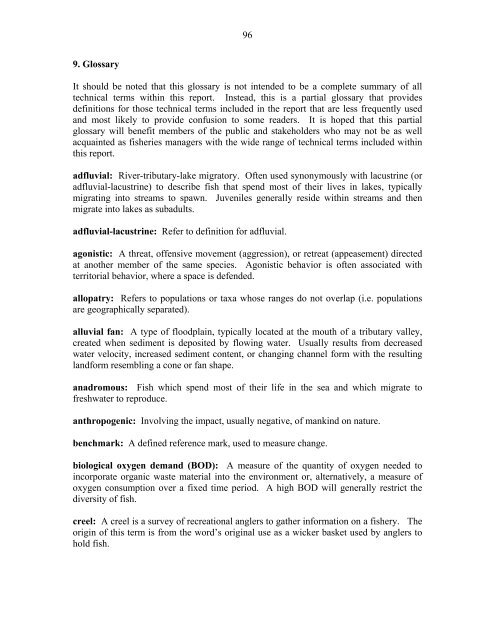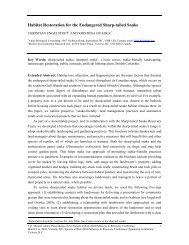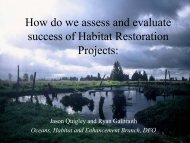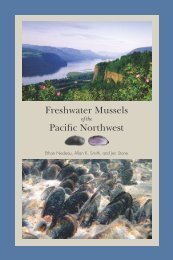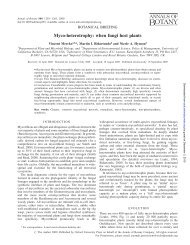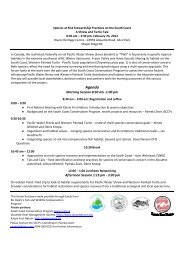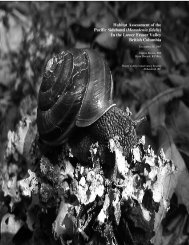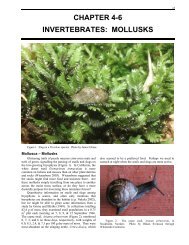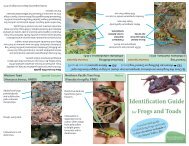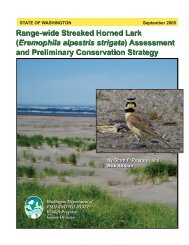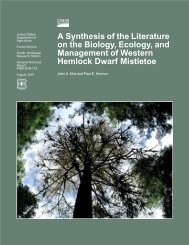Coastal Cutthroat Trout as Sentinels of Lower Mainland Watershed ...
Coastal Cutthroat Trout as Sentinels of Lower Mainland Watershed ...
Coastal Cutthroat Trout as Sentinels of Lower Mainland Watershed ...
You also want an ePaper? Increase the reach of your titles
YUMPU automatically turns print PDFs into web optimized ePapers that Google loves.
969. GlossaryIt should be noted that this glossary is not intended to be a complete summary <strong>of</strong> alltechnical terms within this report. Instead, this is a partial glossary that providesdefinitions for those technical terms included in the report that are less frequently usedand most likely to provide confusion to some readers. It is hoped that this partialglossary will benefit members <strong>of</strong> the public and stakeholders who may not be <strong>as</strong> wellacquainted <strong>as</strong> fisheries managers with the wide range <strong>of</strong> technical terms included withinthis report.adfluvial: River-tributary-lake migratory. Often used synonymously with lacustrine (oradfluvial-lacustrine) to describe fish that spend most <strong>of</strong> their lives in lakes, typicallymigrating into streams to spawn. Juveniles generally reside within streams and thenmigrate into lakes <strong>as</strong> subadults.adfluvial-lacustrine: Refer to definition for adfluvial.agonistic: A threat, <strong>of</strong>fensive movement (aggression), or retreat (appe<strong>as</strong>ement) directedat another member <strong>of</strong> the same species. Agonistic behavior is <strong>of</strong>ten <strong>as</strong>sociated withterritorial behavior, where a space is defended.allopatry: Refers to populations or taxa whose ranges do not overlap (i.e. populationsare geographically separated).alluvial fan: A type <strong>of</strong> floodplain, typically located at the mouth <strong>of</strong> a tributary valley,created when sediment is deposited by flowing water. Usually results from decre<strong>as</strong>edwater velocity, incre<strong>as</strong>ed sediment content, or changing channel form with the resultinglandform resembling a cone or fan shape.anadromous: Fish which spend most <strong>of</strong> their life in the sea and which migrate t<strong>of</strong>reshwater to reproduce.anthropogenic: Involving the impact, usually negative, <strong>of</strong> mankind on nature.benchmark: A defined reference mark, used to me<strong>as</strong>ure change.biological oxygen demand (BOD): A me<strong>as</strong>ure <strong>of</strong> the quantity <strong>of</strong> oxygen needed toincorporate organic w<strong>as</strong>te material into the environment or, alternatively, a me<strong>as</strong>ure <strong>of</strong>oxygen consumption over a fixed time period. A high BOD will generally restrict thediversity <strong>of</strong> fish.creel: A creel is a survey <strong>of</strong> recreational anglers to gather information on a fishery. Theorigin <strong>of</strong> this term is from the word’s original use <strong>as</strong> a wicker b<strong>as</strong>ket used by anglers tohold fish.


